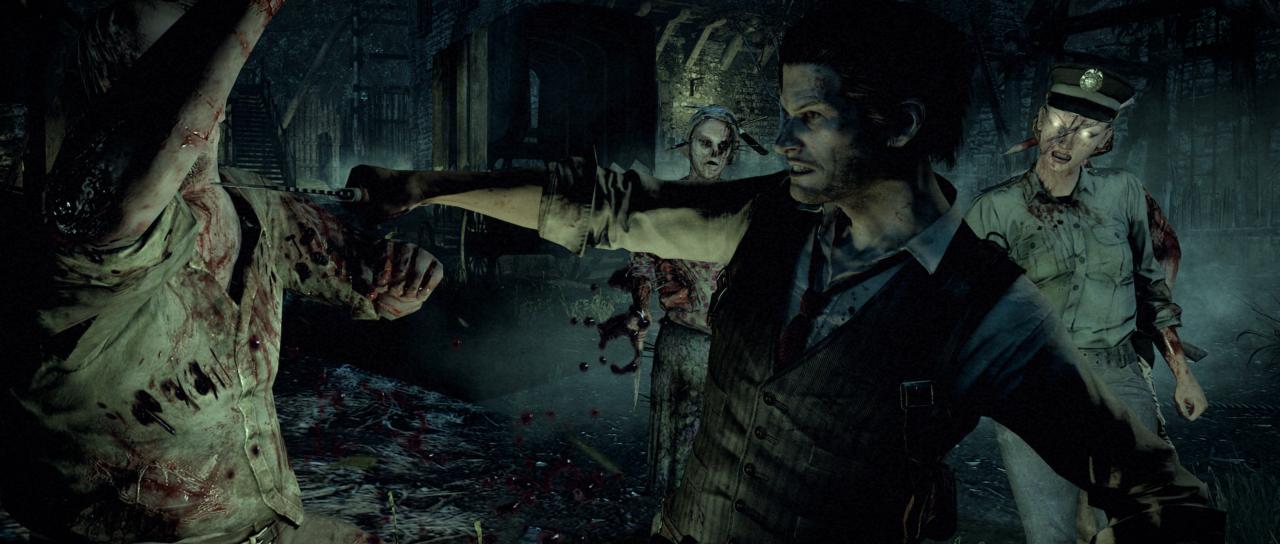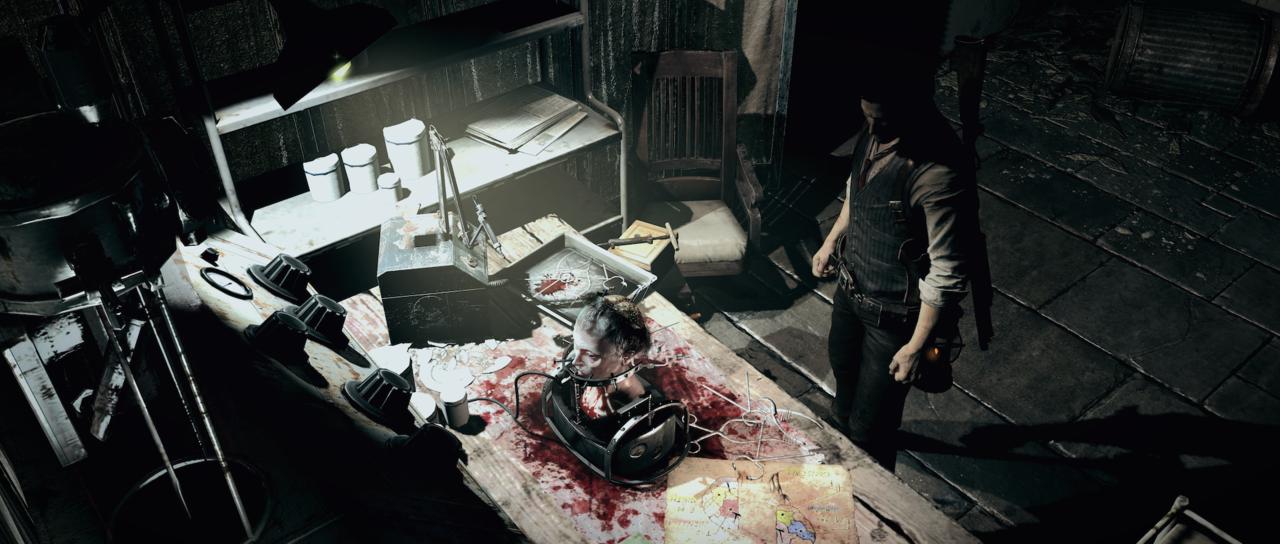Here's What Has Me Worried About The Evil Within
Inner conflict.
Bethesda is billing The Evil Within as a return to true survival horror, and you can see why. It's a grim, atmospheric journey that pits an ordinary protagonist against a grotesque cavalcade of monsters, offering only a scant handful of ammunition and healing items to aid you on your way. But after playing the E3 2014 demo--roughly two hours of play time--I can't help but worry about how well that old-school approach meshes with the rest of the game.
When I think of classic survival horror, I think of early Resident Evil. This was before the franchise morphed into the occasionally interactive blockbuster action movie that was RE6, back when it was about methodically exploring a mysterious location, searching for weapons and items, and piecing together puzzles in order to advance. Yes, there were big, ugly monsters that you had to contend with every so often, but the bulk of your time was spent analyzing your environment and making careful, deliberate decisions about how best to move forward.

Much of The Evil Within echoes those early survival horror games. The demo I played began in a dark, foggy courtyard outside a run-down hospice--just one example of the game's terrific and downright chilly sense of atmosphere. I was quickly presented with a choice: would I proceed toward the glowing bonfire toward the center of the level and take on the three or four undead monsters milling about, or stick to the shadowy outskirts and try to move past them undetected? With precious few bullets, I chose the fear of the unknown, keeping to the dark as I crept along the edge of the courtyard. Shortly thereafter, I made my way into a small cabin after I heard a voice calling from inside.
I slowly turned over the cabin, opening cupboards and drawers in search of anything that might come in handy as I made my way from one creepy room to the next. But when I proceeded toward the basement to find the source of that voice, I triggered a story event that flipped a great big switch in the overall experience. Suddenly the stairs behind me disappeared, leaving me trapped in a long hallway chasing a mysterious apparition. A few moments later, the hallway flooded with blood, and the next thing I knew, I had woken up in a sewer waist-deep in viscera.
Those two approaches to horror--the subtle and the overt--seem to work fine on their own, but I just don't know if they coalesce all that well.
This is the other side of The Evil Within, a game that goes from slow and methodical to wild and unpredictable in a matter of seconds. At any given moment you might stumble onto a scripted event that drastically transforms the environment, setting aside your ability to make careful decisions in favor of a guided detour toward Crazy Town. Those two approaches to horror--the subtle and the overt--seem to work fine on their own, but I just don't know if they coalesce all that well.
What if I had wanted to head back outside once I was done with that cabin? Maybe check out what items were strewn about that bonfire I passed over earlier? No luck. The level was irreversibly transformed, and the roller-coaster ride wouldn't be circling back. Shortly after this section, I found myself walking down a long hallway laced with tripwire booby traps where a dead body lay waiting at the end. Just as I went to burn the corpse with one of my precious few matches--a great little gameplay mechanic that lets you ensure these dead bodies won't rise again--I triggered a sequence where a giant spider creature began chasing me down the hallway. Earlier I chose to duck under those tripwire booby traps rather than risk deactivating them. Now the game was telling me I had to run straight into them because that was the one route I had available to me, past choices be damned.
In a later chapter of the game, I was exploring a creepy old mansion and having a pretty good time with it. Sneaking up on zombified enemies for a satisfying melee kill, turning the tables by luring them into booby traps--it was a fun bit of survival horror. But then, at random intervals, the game's recurring antagonist would appear out of nowhere as a shadowy apparition. This thing could kill me instantly, but given his place in the story, I wasn't allowed to do the same to him. And so I would run away--over and over again whenever he appeared--as I threw my hands in the air in resignation.

It's little things like that which seem to cause tension between the chunks of the game where you're in control and those moments when the story takes over and tells you it's time to do this one very specific thing. Those sudden jolts and transitions just seem to trivialize all the time you spend making careful decisions about how best to survive and proceed through an environment. Sure, any good horror game should keep you on your toes. But The Evil Within seems so eager to throw off any sense of rhythm it might be building up. It feels like a game made up of two halves that should by all means complement one another, but end up in direct conflict.
It's a shame, because there are a lot of things that I really like about The Evil Within. Its atmosphere is outstanding, and its combat is flexible enough to let you hide in a closet to avoid confrontations or craft freezing crossbow bolts that let you shatter zombies into a million pieces. But I just don't know how well its fondness for classic survival horror meshes with its penchant for the more overt, over-the-top style of psychological terror. Maybe I'll be singing a different tune once I get a chance to play through the whole thing from start to finish, but for now, I wish I could say that I enjoyed my time with The Evil Within more than I actually did.
See more coverage of E3 2014 →
Got a news tip or want to contact us directly? Email news@gamespot.com
Join the conversation